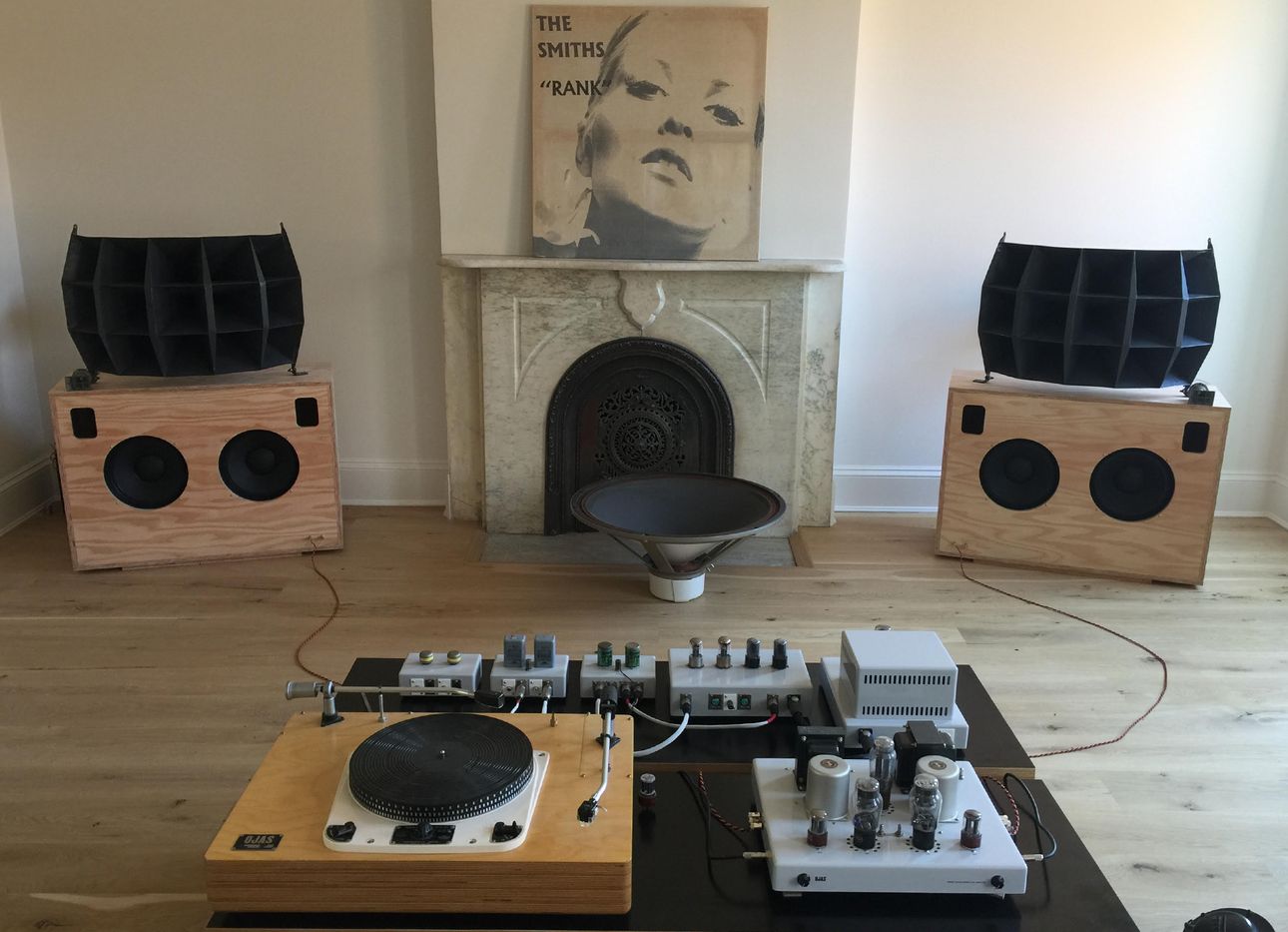
Devon Turnbull on Building His Cultish Handcrafted Speakers
Devon Turnbull, founder of Ojas, creates bespoke, hi-fi audio gear and speakers that are often commissioned and collected as pieces of art, with clients that include Virgil Abloh, Ace Hotel, and Public Records. Here, he tells us what goes into building a premium hi-fi system by hand and the audio heritage he’s trying to keep alive.
“For me, as an audio hobbyist interested in craftsmanship, the important thing early on was understanding exactly what was happening throughout the signal chain, on a materials and components level. Breaking those boxes open and seeing what’s going on inside of them, and what’s contributing to the sound in ways that I appreciate—or, in some cases, what’s taking the sound in a direction that I don’t want to go in. The opening of that box is a really important moment for me, looking at my whole system as a sort of assembly of parts, components, and materials, as opposed to just boxes of gear.
The philosophy that I design from is a very specific, niche world in hi-fi that’s based on early-to-mid-20th century audio technology, to serve a lineage that was started by Western Electric, which became a family of companies that are really the heritage of audio electronic engineering in America—they essentially invented and patented many of the fundamental building blocks that all audio reproduction is built on. Sound systems worked differently back then, and there’s a purity and transparency to the sound that people like myself really feel is unparalleled in modern audio electronics.
Basically, the core components are very, very low power amplifiers (which is what was possible in that era of tech), and for this you need a very efficient speaker. That’s something that can be a little counterintuitive to a lot of people—that a very efficient speaker is very large speaker. Very efficient speakers have big, heavy magnets and are also loaded with horns. The horn, just by nature, has to be a certain size in order to reproduce the necessary frequencies. It’s not designed to be large for the purposes of visual impact; if I could achieve what I’m trying to accomplish with a tiny speaker, I would be all for it.
Visually, one thing that I always try to stay true to is just making the products look like exactly what they are, exposing as much of the raw components as is practical and possible. And if plywood is the right material, acoustically, to use on the speaker, even when I’m painting the surface (which I often do) it should still just look like plywood; if it’s an aluminum horn, I’ll just mount that into the box. I like that things just look exactly like what they are. The way my friend who shares this aesthetic put it, you want the thing to look ‘not fancy but perfect.’ It’s a utilitarian, undesigned aesthetic.
Sometimes, I’m sourcing rare, desirable components, refurbishing and building them into a complete package that someone can use. As much as possible, I’m working with craftsmen who can reproduce these parts in a pure way. A lot of the work I do is involved in finding and developing relationships with these guys who are masters of their craft—and then trying to figure out how to keep these things alive, because in the last 20 years alone, a lot of the designers and craftsmen of these amazing and specific types of audio have literally died off, and you can’t just get this stuff anymore.
My work is made by hand, by me and maybe one other guy in my shop. A lot of mainstream hi-fi audio brands will claim or aspire to proprietary technology, and that’s basically counter to what’s inspired me. I love tried-and-true things that people have, for decades, been turning to for reliable, best-possible sound.”